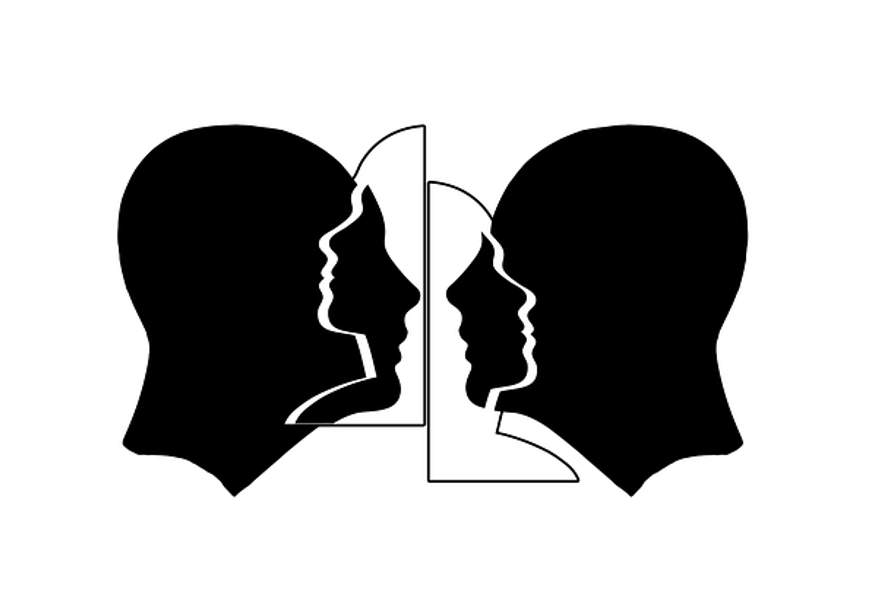In this second part of the Stress and Mental Health Awareness months April and May, respectively, we’ll look at the conversion of your stress, your emotions, and your feelings into a choice through a little bit of trusty science applied liberally. Make sure you catch up on part one from April to get the full picture and even more takeaways on your choice and empowerment to support your health and personal and professional growth.
The First Law of Thermodynamics addresses the conservation of energy. Energy can neither be created nor destroyed; it can only be converted from one form to another. This law tells us everything we need to know about mental health, stress, and our coping mechanisms.
Let’s call the entanglement of the human experience with this law Emotional Thermodynamics (ET). This is a concept first introduced in Change Enthusiasm Global Founder and CEO, Cassandra Worthy’s, best-selling book Change Enthusiasm: How to Harness the Power of Emotion for Leadership and Success. Everything natural and manmade on earth contains and is composed of energy, from plants and weather patterns, to the hair on your forearms, the water bottle on your desk, and the engine in your car – everything contains its own expression of energy. Some of the easiest tangible measurements of energy are expressed in temperature, calories (kcal), joules, watts, and voltage. When expressed in these quantifiable ways, no one bats an eye at the existence of energy. Yet when we move into the more intangible sphere, the conceptualization of ET becomes abstract. Or does it?
"Emotion is energy in motion"
-Peter McWillams
Imagine how you feel when you accomplish something great when you reunite with a best friend or a loved one after a long separation. Imagine a dog, exuberant over your return home. When someone holds the door for you without being asked and offers you a warm smile while your arms are full. When you are so frustrated, you could scream and go complete hulk at your desk or cry. When you feel misunderstood and unseen. Each physical representation of these emotions contains energy in nearly measurable expressions.
Energy, by law, can be conserved, transferred, or transformed. Conservation is found in ignoring or holding the energy inside. Over time, this runs a risk of outbursts and adverse effects on your emotional and physical health. Transference is expressed in venting or transferring the energy onto someone or something else. While this may feel like a release, the feeling is fleeting and can be damaging to property, relationships, and trust. Transformation of energy occurs in recognizing the energy and the effects in your mind and body, then choosing actions that transform the signature of the energy.
"Somewhere in yourself you have to realize – you are responsible for what happens to you. You cannot blame anybody for it."
-James Baldwin
Think of this scenario: You experience really frustrating days at the office, and there have been micro-aggressions questioning your competency, but you keep a straight face while boiling under the surface of every interaction. When you go home, you start to cook dinner, and your spouse asks why you’re adding salt to that food, and it feels like the icing on the cake; another person questioning your competency, and now AT HOME?! You lose it. You yell at your spouse only to realize you’re not yelling at the person in front of you but everyone you engaged with prior to coming home. You’ve conserved all the energy building up throughout the day and transferred it onto someone else. Your spouse is notably stunned by your seemingly unprovoked outburst.
In the same scenario, after a particularly frustrating meeting, you walk back to your desk, you ask yourself what you can control and how you can try to transform all this energy building inside of you for something useful. You sit down at your desk, close your eyes, and take 3 deep box breaths: 5-second inhale, 5-second hold, 5-second exhale, 5-second hold.
The box breath work takes only a single minute, but when you open your eyes, you realize this frustration is not normal at your office. You know there are a few co-workers and employees managing difficult personal challenges outside of the office, and the added higher stress of deadlines and deliverables must have everyone a little bit on the defensive, including you. You place your hands on your keyboard, take another deep breath and believe this energy can be used to support each other rather than compete with one another or isolate. You send an email asking for a department meeting to conduct a pulse check and re-establish some safe spaces for everyone to treat others with care, especially in times of stress. You have transformed your energy. This is categorized by Change Enthusiasm as The Choice. When navigating a change challenge, you can transform emotional energy by bringing awareness to and choosing to live your core values, says Cassandra Worthy, founder, and CEO of Change Enthusiasm Global.
According to the 2022 National Study of Change and Emotion in the Workplace, 78% of Americans believe they have the power to choose how they experience change. When utilizing those choices during times of change challenges, 84% of Americans value taking time for themselves to rest when going through change at work. One of the greatest gifts you can give yourself (and others) is the power of choice. The number of things outside of your control is infinite, right down to getting laid off, the death of a loved one, and witnessing a dollar bill blow into your car on a windy day as you open your door. The choice you always have is how you respond to the circumstances and things you cannot control.
"I am who I am today because of the choices I made yesterday."
-Eleanor Roosevelt
In the spirit of mental health advocacy, the best choice is entirely person, situation, access, resource and privilege dependent. Sometimes, the best choice, especially in times of constant ET navigation and monitoring, is to rest as you’re able. Even a moment (or minute in the scenario above) of breathing can be restful, rejuvenating, and centering when larger periods of rest are not reasonable expectations. When considering the conversion of your energy, it may be helpful to keep Concentric Ring Theory in mind and to comfort in, dump out. The concept, developed by Susan Silk, is to imagine the person immediately affected by a situation at the center, and with each degree of removal from the center, people exist on rings moving out away from the center (think Saturn at the center and each ring is a lay of removal, moving out). When at the center, it’s reasonable to ask for support and help from those farther removed from the center, but those farther removed do not dump towards the center. This theory also acknowledges we are all existing as concentric rings, in the center of our lives.
This perspective can perhaps lend towards having empathy for others in the center of their own rings. This doesn’t negate how you or others feel, experience or express their emotions. Ring theory is all about directing them most effectively. It also doesn’t mean you can’t have mutual conversations with others about your shared grief or challenges. It merely serves in recognizing that some people are carrying a burden in relation to this situation that’s heavier than your own if they’re closer to the center, and having the awareness not to add to their burden. A safe assumption though, would be that when in doubt, offer comfort, and find someone who’s clearly further away or completely outside the ring system of the challenge to help lighten some of your own burden.
"Choices are the hinges of destiny."
-Edwin Markham
For practicality sake, try this choice exercise from Change Enthusiasm to become more aware of your signal emotions, habitual reactions to them and the ET resulting from those actions. We are decision making machines.
Create a Choice Inventory - For one day, write down every choice you make and the consequential feeling or thought. The average human makes 35,000 choices a day, some studies suggest about 122 of them are conscious, so don’t worry if you miss quite a few. Review your list and group your choices by buckets of family, friends, health/nutrition, relaxation/enjoyment, self-care, money, purpose/passion, professional relationship building. Take note which buckets hold the most choices and notice where most of your time and decision making is being directed.
Over the course of a day you will be able to see where you are placing your priorities in choice importance. This exercise can help you assess what dominant feelings are showing up in vs. which you’d like to be more dominant. You will start to see on paper if your choices are lining up with who you want to be, and where to shift focus to live in more alignment with that person.








